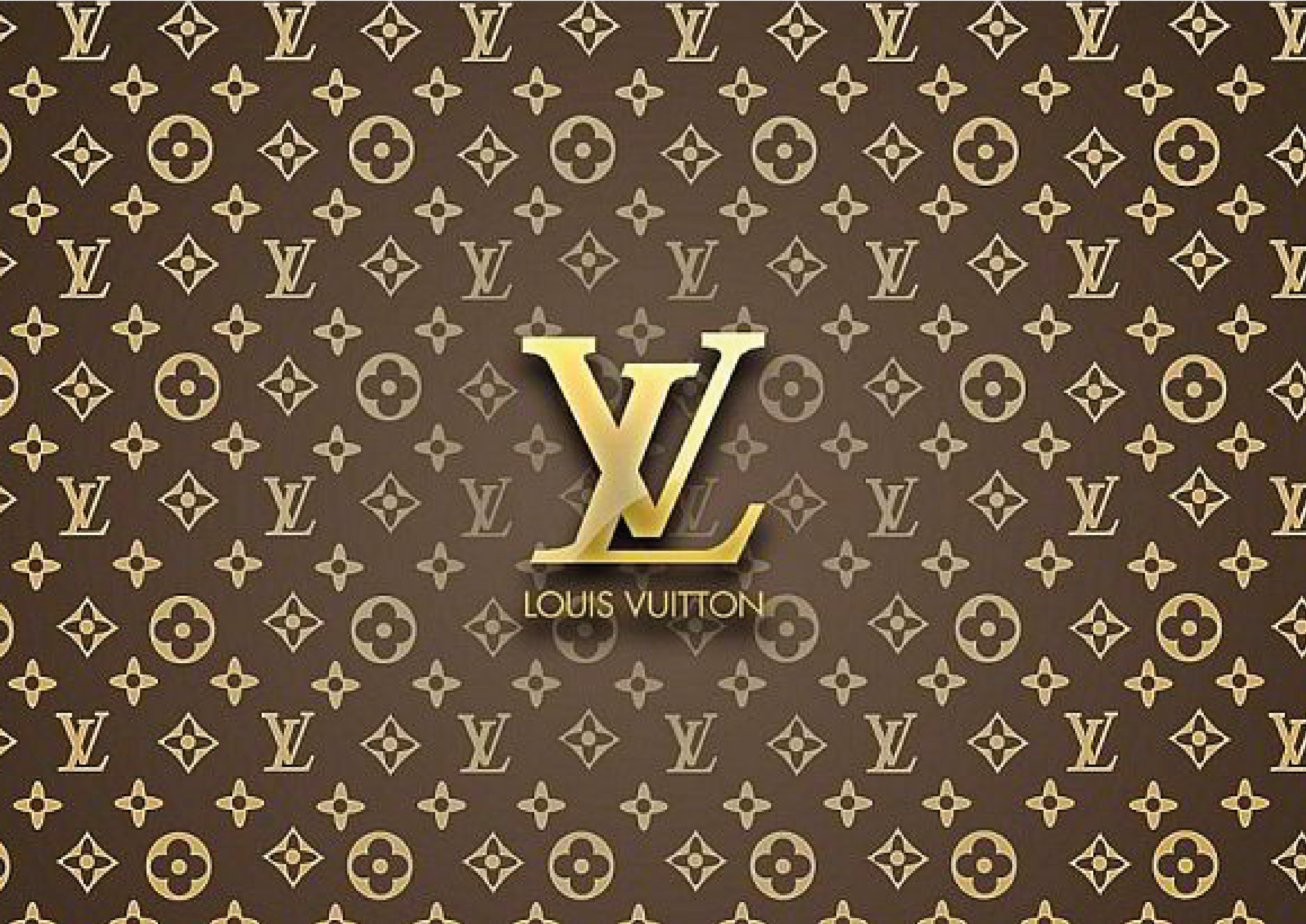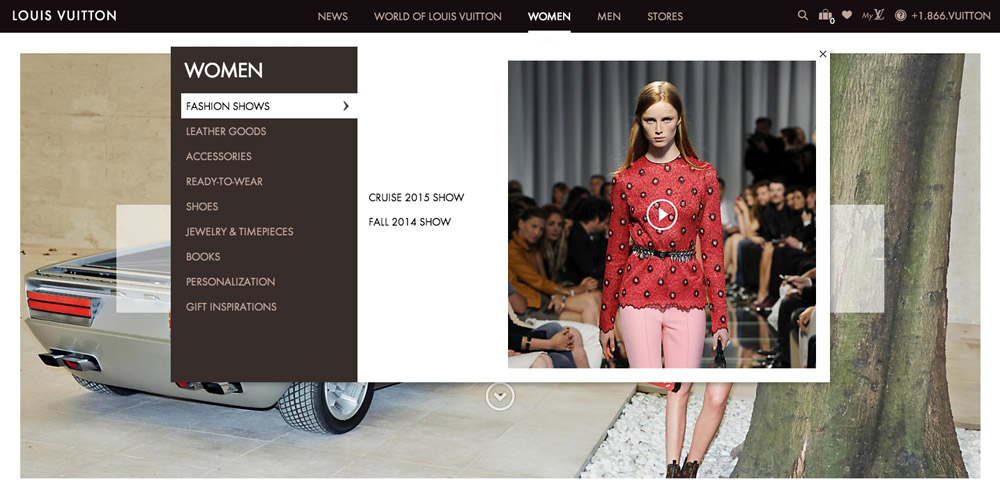
Welcome at Louis Vuitton
LOUIS VUITTONStudent: Hannah SieglerSection: 3Program: MIM Master in ManagementCourse: Operations & Supply Chain ManagementProfessor: Prof. Felipe Amado Quintana NavarroWhy did I choose O&SCM at Louis Vuitton?Louis Vuitton is a luxury fashion and accessory brand relying on an over 150 year company history. Selling high quality products to their upper class customers, they convey the story of Louis Vuitton, a French luxury lifestyle.Besides this lifestyle, Louis Vuitton is also itself a hands-on manufacturer of products. That's why it is for me a perfect example to show how a company, relying on high-quality material and hand-made products, is able to survive under today's efficiency levels and cost pressure. I will be exciting to explore how Louis Vuitton works behind its luxury facade and how they make their brand work so successful.Join me in this experience...
What do you have to
keep in mind after exploring
this Mind Map?
Click to see the Key Take-Aways!
The Key Take-Aways from O&SCM at Louis VuittonLouis Vuitton successfully managed to evolve as one of the worldwide leaders of the luxury industry.Although still manufacturing a lot of "hand-made" products, they work very efficiently through the use of lean manufacturing tools. Kanban, Takt-time and Andon Cord dramatically increases the manufacturing efficiency of Louis Vuitton. Value Stream Mapping and a vertical integration of e.g. suppliers help the brand to dynamically react to changes of the environment.Although, in my own opinion, Louis Vuitton doesn't have the most innovative operating model, they are able to profit from their outstanding customer experience.Through quality, efficient operational processes and their exceptional customer experience, I am convinced Louis Vuitton (currently with a revenue of 28.6bn) as part of LVMH, will stay the leader of the luxury brands worldwide.Link:https://www.cnbc.com/2018/10/04/the-luxury-sector-is-growing-faster-than-many-others-and-gucci-leads.html

Excellent customer service is elementary
for Louis Vuitton. Click on the link to read about a woman, being more than happy about what happens "if Louis Vuitton screws up".
An outstanding Customer Service
During our Operations & Supply Chain Course in Session 12, we covered excellent service. Well, Louis Vuitton is the perfect example of a company taking care of its customers when they experience a problem!

Last but not least, on which
principles do all of these
concepts build at Louis Vuitton?
Here are the key principles:

Location
Stores located in the most prestigious locations in the world (e.g. on Fifth Avenue in New York or on the Champs-Elysées in Paris)https://es.louisvuitton.com/esp-es/tiendas

Brand Image
Glamorous brand image with an advertising strategy focused on travel, famous models and actresses with a recent shift towards celebrities and influencers in general.https://de.louisvuitton.com/deu-de/kunst/freunde-des-hauses#

Quality
Louis Vuitton focusses on high quality materials.

Customer Experience is
one of the most important
aspects for Louis Vuitton.
Check out how they achieve it!

In-Store Customer Experience
Does Louis Vuitton Deliver an Effective Experience?According to Sampson Lee, an effective experience fulfills two conditions: it creates positive emotions and memories to target customers; and, at the same time, it delivers target brand values.What is the ‘pain point’ at Louis Vuitton retail stores? Besides price, from the responses I received, it’s the ‘attitude’ of the salesladies—unless you’re a celebrity or dress and look like a ‘rich’ person—they usually ignore you. I’ve been told this is a consistent experience across the globe, not country or region specific.However, the pleasure peak is projected at ‘prestige feeling’, part of this feeling could be constituted by observing how the rich & famous are being served and how the normal customers are being ignored inside the store. None of us like to be ignored, but since the pain is so intense—the way we are treated is one of our critical needs—it’s strong enough to trigger our Psychological Immune System to rationalize our suffering for something of great value.Kahemann’s Peak-End Rule told us we could remember only the peak and end moments during an experience. Though we’re suffering from being ignored, our pleasure peak is at the feeling of prestige; one of the most critical needs of Louis Vuitton target customers. This feeling is the key brand value—the Effective Memories of a Louis Vuitton retail experience are highly positive both to customers and to the brand. In this sense, Louis Vuitton is delivering an effective experience. (http://customerthink.com/is_louis_vuitton_delivering_effective_experie/)My opinion:The results of this study and article of Sampson Lee are quite impressing in my opinion. He reveals that the only important points during a customer stay are the peak and the end points. Louis Vuittons peak moment, the "moment of prestige" when being inside the store, must feel so strong to customers to lead them actually repress the bad feeling of being ignored by the sales people. In respect of the formula: Satisfaction = Perception - Expectation (Session 14), customers would could also probably be not satisfied because of the high expectations. That was the case when I entered a Louis Vuitton store. I had high expectations of an amazing and personal service, but instead it was very crowded and i wasn't noticed by any sales person.

10 Schmitt Principles
10 Schmitt PrinciplesExperience doesn't come randomly. It has to be planned: Louis Vuitton carefully plans its customer experience. By mastering the art of storytelling, they involve the customer in the "World of Louis Vuitton". This is where the customer gets caught and incentivized to buy.Starting Point should be the customer experience: When entering a Louis Vuitton store, a concierge is opening the door for you. This instantly gives the feeling of prestige, which ultimately is conveyed by the brand.Be obsessive about the details: LV delivers high quality products and a prestigious worldwide customer experience, nevertheless, examples can be found that people are unsatisfied with the in-store services as they feel ignored by sales people (-> Store Customer Experience)Find out the rubber ducky for your brand: The rubber ducky and therefore the most recognizable feature/experience about Louis Vuitton are its famous bags, behind the background of French elegance and prestige and luxury.Think about the user experience, not about your product or service: Louis Vuitton, as many other luxury brands is depended on the user experience of their customers. Nevertheless, as stated in principle 3. evidence on unsatisfied customers exists, although this doesn't hinder them buying items from Louis Vuitton.Try to offer holistic experiences, surprising your customer's sense: Louis Vuitton offers a holistic experience around the globe. Brand identity through rather standardized store design and service is given. Louis Vuitton surprises customers with new features such as "Louis Vuitton x Surpreme" when they cooperated with this famous street style brand.Build up different kind of experiences: If you order from Louis Vuitton, they care about their customers, so that you get your product together with a card saying "thank you" on it. They frequently also put "additional gifts" into your ordered package, such as a city guide from Louis Vuitton.Use a consistent methodology: Louis Vuitton has a consistent store, online page and service concept all over the world.Offer an omnichannel experience: Louis Vuitton delivers a well planned omnichannel experience. Customers can experience the brand in the physical store, on the website, on social media (Facebook, Instagram, Twitter, Snapchat, Youtube).Add dynamism and personality to your brand: As described in principle 6, Louis Vuitton lately started to frequently feature other "young" street style brands, like: Louis Vuitton x Off-white, Louis Vuitton x Takashi Murakami, etc. Furthermore, they offer bad personalization.

Online Customer Experience
Starting with the homepage, the focus is on content first instead of product selection.Using responsive design, LV draws the focus on its upcoming fashion shows. It provides further links to its Instagram account and its product ranges.Storytelling is important for luxury brands such as LV. Therefore, they provide links on the homepage with "News" and "World of Louis Vuitton".Content pagesThe World of LV section hosts rich media content.Relating to various aspects of the LV brand, including product lines, the company foundation and its work in art and travel.Much of the content is presented as full screen videos that are visual highlight and attract customer attention.You can delve deeper into some of the content and get even more involved by looking at slideshows or images from the catwalk shows.Nevertheless, what you don't find are social sharing buttons or also the integration of the ecommerce site is not existent.In my opinion, this is a missed opportunity as it means there’s no natural user journey from the content to a conversion.Even though it is unlikely that many people will watch a catwalk show online and then immediately spend 1.000€ on a dress, but it’s still important to draw a line between content and commerce so people can easily research items they are interested in.Search toolThe search tool in the upper right corner isn’t especially prominent.However when clicked it alludes to the fact that users can expect to find more than just product suggestions, which is a useful feature:It doesn’t employ predictive search as a feature, but it does come back with suggested products for obvious misspellings.For example, ‘hanbag’ returned these results, which included 431 products, two stores and five services:CheckoutLouis Vuitton offers a guest checkout option, which is usually considered best practice though I’m not sure it matters as much with luxury goods.If you’re spending a lot of money you might prefer the additional security and reassurance of having registered an account with the retailer.The checkout has a simple, clean layout.If opting for home delivery, shoppers need only enter their name, address, a contact number and an email address before proceeding to the next stage.Payment can then either be made by credit card or via bank transfer. For the latter option Louis Vuitton has to email the details over separately.Overall the checkout process is very quick and convenient.

Now, coming to the marketing
aspect. Especially as a luxury brand,
the Marketing department has to work
closely with the operations department!
In Session 11, we learned how important
good communication between departments
is to successfully cooperate!

4 P's of Marketing
Louis vuitton marketing mixProductIn order to supply the best imaginable products the company has always concentrated on the designs that are intricately created and artisanship that is traditional as well as simply exquisite.Instead of using machines to increase their production the company has taken a step backwards by hiring specialized and expert workers. This has resulted in unique and original merchandises that closely resemble the aspirations and imaginations of the consumers. In order to tackle the market of counterfeit goods the company has paid a lot of effort in the design itself, & therefore it is not easy to imitate its products.All the goods and designs are registered to counter fake goods. The portfolio of luxury goods that the company deals in includes items like leather goods that are made from hundred percent original leather and exclusive ready- to-wear clothes line that are designed with utmost care and are hundred percent original. The company is famous for its handbags and beautiful watches.The buyers also covet the glittering jewelry and designer shoes. Louis Vuitton also offers a range of eyeglasses, briefcases, scarves, belts and wallets. In recent years, the company has hired new, young and talented designers to attract the young generation of buyers.PlaceLouis Vuitton is very clear in its distribution policies. Its products are highly exclusive and sold with the same mindset of providing exclusive accessibility. To purchase a Louis Vuitton product the customer has to reach its personalized stores. The sale of these items is through limited channels of exclusive distribution. The company is of a set and preconceived mindset that allows them to use its own outlets for product distribution.They do not sell any of their branded products in departmental stores. They feel that they have the best possible options to sell their products in their own stores, as their salespersons are highly professional with a keen mindset to tackle the customers in an intimate and warm environment.In the long term, this marketing strategy helps in the reduction of intermediary costs that other brands face while selling through long channels of distribution. This also results in direct dealings with the customers that lead to efficient and friendly relations. All its stores are located at very high profile and prime locations.Products in these stores are prominently displayed keeping in mind the latest fashions. Louis Vuitton has opened its outlets in different parts of the globe and they have at least three hundred retail outlets. This includes stores in Los Angeles, Dubai, Las Vegas, New York, Paris and Tokyo. Online purchase of Louis Vuitton products is possible only in the United States.Price Louis Vuitton has made handsome investments to maintain the rich quality of its products. The contemporary designs of the products have helped the company to maintain a premium pricing policy. Louis Vuitton employs a policy of integrity pricing strategy throughout its distribution network.Therefore, it does not believe in reducing the actual price of any of its product and does not offer either sale periods or discounts. As the prices are very high, only the elite or upper middle class of people are able to buy such products. The company is said to have been following a policy of value based pricing strategy.As the cost price of the products is actually much higher because of its uniqueness, material and quality the value of the product simply results in premium pricing. A Louis Vuitton product is actually a style statement and hence, the customer is happy to pay the exorbitant prices. The perceived value of Louis Vuitton is very high, so in the case of Louis Vuitton products the consumers feel that they are receiving the value even though the price paid is high. Thus, the high value based pricing strategy of the company is apt for the consumers.Promotions Louis Vuitton has employed a promotional strategy for its products with the help of celebrity endorsements. Famous actors like Jennifer Lopez, Kate Moss, Scarlett Johansson and Uma Thurman have been associated with the brand as its ambassadors. They have featured in the high profile ad campaigns for this brand. Louis Vuitton has also taken an active part in sponsoring mega sporting events like motorsports and yachting.These events are attended by mostly the elite society and by associating with these events; the company has made a direct link with the target audience. Advertising is the main tool to create awareness about the product and keeping with its illusion of exclusivity the company has managed to make ads that are really individual and fashionable.Although the company does not advertise on television but it does follow a policy of high profile advertisement in newspapers and fashion magazines. These ads are all about exclusively handled images that leave a distinct mark on the public. This strategy strategy has created waves in the advertisement industry and helped in making the goods popular throughout the globe. Most of the advertisements revolve around the celebrities and this is to create an emotional connection of the consumer. The customers believe that they are also a part of this exclusive group.
Getting to know
Louis Vuitton
Louis Vuitton – part of the LVMH group – is the illustration of a French company that successfully managed to align its operating model with its business model.Louis Vuitton is one of the largest luxury-goods firm in the world. Established in France in 1854 and specialized in leather luggage, their products were revolutionary at the time because of the combination of both lightness and storage capacity. They were recognizable with the famous “LV” logo and the monogram canvas. In 1893, the firm started its expansion by participating in the Chicago World Fair and promoting the brand in the US.(Louis Vuitton in Japan, Richard Ivey School of Business, 2010-10-15)The expansion strategy continued in the 20th and 21st century with a focus on the Asian markets. Vuitton also expanded its product line with smaller leather goods such as purses and wallets and started creating limited-edition collections to refresh the brand from time to time.

How does its
old operating model
look like?
Back in 2005, Louis Vuitton was still operating under a traditional operational model. It would usually take around 8 days and between 20 to 30 craftsmen to produce a “Reade” tote bag.Although this traditional process was synonym of quality and luxury for customers, it was not efficient nor adapted to the growing demand. New designs were often sold out quickly and the company was not prepared to speed up production in this situation (Louis Vuitton tries Modern Methods on Factory Lines, The Wall Street Journal, 2006-10-09).With the help of McKinsey, a strategy consulting firm and inspired by the lean processes used in the Japanese auto industry, Louis Vuitton revolutionized its operating model. Under the new system, Louis Vuitton was able to assemble bags in less time and in a more efficient way.Link:https://rctom.hbs.org/submission/louis-vuitton-luxury-handbags-coming-off-an-assembly-line/
Louis Vuitton fundamentally
changed to a New Operating
Model incorporating lean tools!
LV’s operating & business models work well together: by being able to provide products to their customers on time, ramping up production if a bag becomes popular, LV does not exasperate their customers by turning them down (Leading by Example, New Zealand Apparel, Vol. 42 Issue 4, 2009-05, Dan Ahwa).
Manufacturing
In 2005, McKinsey measured lag time in the different production phases and realized that there was a lot of wasted time that could be eliminated:Workers who were originally specialized in only one operation are now trained to be able to accomplish different tasks in the assembly process. For example, a worker who was specialized in stitching would now be in charge of cutting, stitching and finishing the edges of a pocket. Workers were also organized into small teams of 6 to 12 following the example of workers in the Japanese electronics industry.Workstations were re-arranged in U-shape, with the sewing machines on one side and the assembly on the other in order to minimize time to pass the work from one station to the other (At Vuitton, Growth in Small Batches, The Wall Street Journal, 2011-06-27).This led to freeing-up space in factories which allowed to hire more workers and therefore becoming more efficient thanks to a better use of assets. Louis Vuitton also uses computer programs to help leather workers identify flaws in the skin they receive, reducing earlier the number of defects and the amount of faulty products returned. Similarly, robots are now smartly used to help workers focus on their core competencies: for example, in a shoe factory, robots are sparing workers walking back and forth from their workstations to the shelves (Louis Vuitton shoe making in Fiesso d’Artico).Link:https://rctom.hbs.org/submission/louis-vuitton-luxury-handbags-coming-off-an-assembly-line/
How does Louis Vuitton use
Lean Manufacturing to increase
revenue and performance?
(go to minute 4:27)
In Session 7, we studied the topic of Lean Management and its correlating Lean tools kit:Louis Vuitton has to manage the combination of:Mass ProductionQuality & RarityA highly efficient process is guaranteed through the use of the right lean tools. In the following, the Andon Cord, Takt-time, Kanban, Value Stream Mapping, and Vertical Integration at Louis Vuitton will be explained.Link:https://www.businessoffashion.com/articles/professional/the-new-fundamentals-of-manufacturing
Andon Cord
The Andon Cord - one principle of Jidoka - is used by Louis Vuitton to serve customer's demand of flawless, high quality products.Andons normally are the lighted signal with three colors on top of each level of production assembly line. Whenever a worker detected any problem in the production line, or found himself unable to keep pace with the line.At Louis Vuitton, each worker (usually 8-12) in the production line say out loud "there is a problem here", whenever they detect a problem in the production process.This enables Louis Vuitton to save money, which normally would have spend on producing the defective products, replace to product for the customer, and all cost incurred with an unsatisfied customer. Overall, this procedure increased revenues.
Value Stream Mapping
PValue Stream MappingAs we could see in Session 2 Process Fundamentals, a Value Stream Map helps discover where in the supply chain processes need and can be improved a value stream map should be made. Value stream mapping is a simple tool used to redesign value streams. Value stream mapping analyzes the current value stream and discovers sources of waste and uncovered and reduces. Communication between workers and management is a problem with introducing lean thinking, mapping the value stream can clearly indicate and communicate problems in the supply chain to the entire company. A recommendation in implementing lean thinking in luxury fashion, is to map the value stream as it increases communication between employees and clearly identifies problems and facilitates formulating goals to improve the supply chain.
Kanban
KanbanTo continue improving communication and optimizing a 'pull' system through production, a Kanban system should be introduced into luxury supply chains. Kanban is a scheduling system for lean manufacturing and a method of just in time manufacturing; it is an inventory system to control the supply chain. Kanban uses demand signal to slow down the supply chain to re-supply according to the demand of the customer and as inventory is needed, this system keeps lead times and inventory low. Kanban is a system to initiate and improve on communication in the supply chain and reduces inventory and time waste.
Takt Time
Takt TimeThe minimal recommendation a luxury company can adopt to integrate lean thinking is focusing on takt time. Take time is the average measure of the time to produce a product depending on customer demand, therefore lowering inventory. This could be taken into account for producing iconic items that brands have such as the Hermes Birkin bag which not only starts at USD 6000 but it represents luxury. It has a large demands, and represents a large profit margin for Hermes. To integrate lean thinking, apply takt time to produce luxury products at a standard time, per customer demand. Quality and demand of the iconic product is still maintained, while the amount of wasted products, time and inventory is lowered.
Supply Chain Vertical Integration
Supply Chain Vertical IntegrationThe importance between the supply chain and manufacturers is demonstrated with the success of high street giant Zara's transformation into lean logistics. A recommendation for luxury designers is to vertically integrate the supply chain. A barrier that is commonly seen with lean thinking is building relationships with suppliers. Suppliers are integral to lean practices as they effect quality and any disruptions will affect production and increase waste, as we discussed in Session 7 on Lean Management during the course. Luxury fashion houses like Louis Vuitton should begin to integrate the supply chain by improving supplier relationships and incorporating the finishing embellishments inhouse. Providing services inhouse allows the Louis Vuitton to react to different season trends quicker, changing embellishments and designs as needed. This ensures quality is maintained throughout the process and that waste is eliminated, in extra costs and time.
Training of Manufacturing Workers
Because workers are cross-trained, they identify defects earlier, which leads to fixing flaws more quickly and reducing returns of faulty handbags. This improves the quality image of the brand.Less specialization also enables workers to make more types of bags – you can shift workers more easily to producing a more popular bag when needed, depending on demand. This allows to create more collections every year and to ship them once every six weeks, twice as fast as before.
Automation of Manufacturing
The automation of the processes allowed to reduce costs and maintain jobs in France in order to keep the “Made in France” label, further contributing to the brand value.
Distribution
Distribution
Vuitton also redesigned its distribution system in hubs and spokes to meet customers demand faster: with a global distribution center near Paris, they are now able to ship products to six regional distribution centers in the world. Stores around the world send sales information to the French headquarter a few days after product launch in order to adjust demand appropriately.
Stores
In Session 6, we discovered the topic Stock Management. At Louis Vuitton, even in stores, the operating model has become more efficient and aligned with its business model: In the past, salespeople were going to the stockrooms to find the products, leaving their customers alone. Now, products are sent – wrapped! – with an elevator from the basement stockroom to the cash register (Louis Vuitton tries Modern Methods on Factory Lines, The Wall Street Journal, 2006-10-09). Customers are therefore better served with the same number of employees.